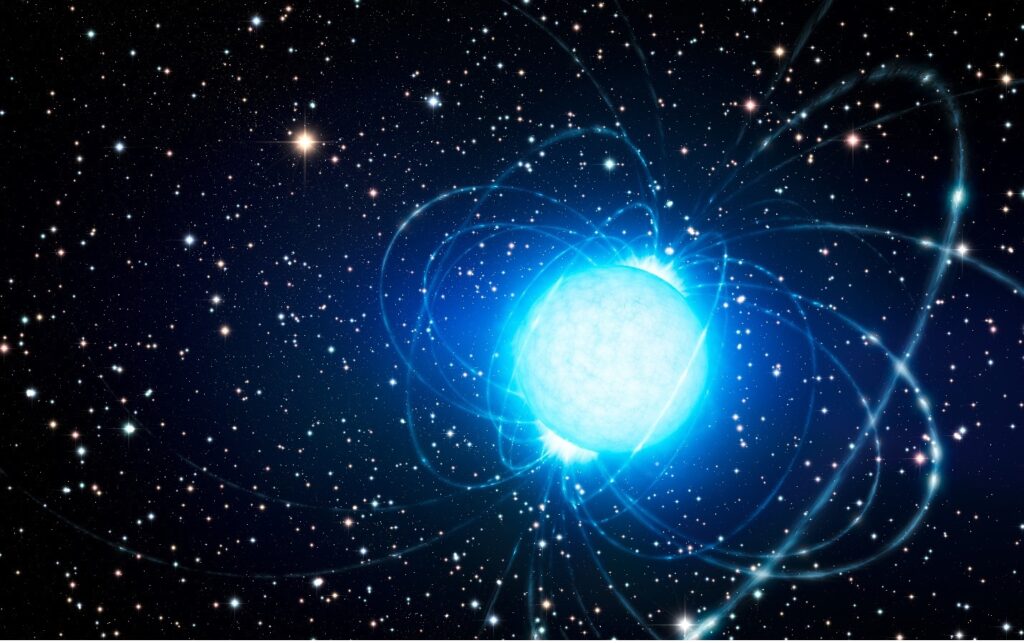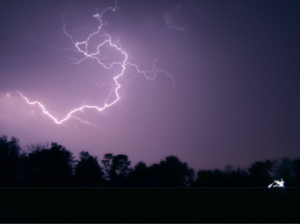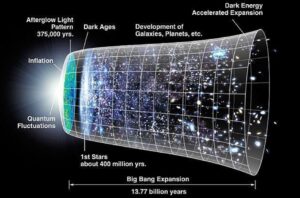
Figure 1: The image above shows an artist’s depiction of a magnetar in a cluster of other young and bright stars
Source: Wikimedia Commons
Neutron stars are one of the most perplexing celestial objects in our universe and are believed to be formed from supernovae and the collapsing cores of massive stars. These anomalies are essentially one giant atomic nucleus and have been the center of many astronomers’ attention. With over 1,000 papers on the subject written so far, the secrets of neutron stars are only just being discovered.
Classification of Stars
Enjar Hertzsprung was a Danish astronomer and engineer who analyzed stars and their absolute magnitudes and spectral types. Hertzsprung published his seminal paper in 1905 and was the first to categorize massive stars as “giants” (Carroll et al. 2017). Later, Henry Norris Russell of Princeton University came to the same conclusion as Hertzsprung about stellar giants and named their dim, smaller, counterparts “dwarf” stars. These two astronomers together are responsible for the Hertzsprung-Russell (H-R) diagram, which originally plotted around 200 stars and categorized them into their primary types: main sequence, white dwarfs, giants, and supergiants (Figure 2)

Figure 2: The image above shows an H-R diagram (absolute magnitude vs. spectral class) with data from the Hipparcos catalog. More than 3700 stars are charted
Source: Wikimedia Commons
Main sequence stars account for 80%-90% of all stars in the H-R diagram and appear in a diagonal line on the diagram. White dwarfs sit at the lower left-hand side of the diagram and giants sit right above the main sequence line, with supergiants on the top right-hand side of the diagram.
To stay lit, stars must utilize energy. Once a young star has enough mass to become stable it begins the process of nuclear fusion, the event in which atomic nuclei fuse to form heavier atoms with the release of energy. Most of all stars are composed of approximately 70% hydrogen by mass, and as a result, nuclear fusion is prevalent within the star’s cores. Hydrogen is the lightest element in the periodic table and each atom of hydrogen contains one proton, neutron, and electron. As hydrogen atoms fuse, the subatomic particles come together to create another atom composed of two protons, neutrons, and electrons: helium. The burning of hydrogen is a very slow process, however, and the interior composition of the star changes slowly as a result. The Sun, for example, has been estimated to have a hydrogen-burning lifetime of 10 billion years (Carroll et al., 2017). If the interior composition changes slowly, the evolutionary changes occur slowly as well. Most of a star’s life will be made up of this hydrogen-burning stage, referred to as the main sequence.
Large main sequence stars have an important feature that their lower mass equivalents are missing: convective cores. These cores continually mix the stellar material and keep the core homogenous. The end of the main sequence phase of stellar evolution occurs when hydrogen is depleted within the star’s core. At this point, the core contracts and consumes the remaining available fuel, causing an increase in internal temperature. This increase in core temperature causes the shell to produce more energy, which results in an increase in luminosity, a decrease in shell temperature, and a radial expansion. As the star expands, the convection zone also expands, allowing for a nearly adiabatic temperature gradient (a process in which heat does not enter or leave the system). Internal pressure builds from the nuclear power within a star’s core; yet when that same nuclear power ceases, the pressure slowly dissipates. The star is “held up” between a balance of internal pressure and gravity. If one of these forces drops, just as the internal pressure does, the force of gravity causes the star to collapse into a supernova.
What Exactly is a Neutron Star?
Neutron stars are formed from the cores of collapsed main sequence stars. Once the core condenses, it has enough force to crush protons and electrons into neutrons and leaves behind the densest material known to man, wherein a 1-centimeter cube weighs as much as a mountain. The parameters for forming a neutron star are very specific. If the star is too large, it will collapse past the point that forms a neutron star and will eventually form a black hole. If the star is not large enough, it would not have enough energy to result in a supernova and will instead slowly shrink into a white dwarf. Most neutron stars contain 1-2 times the mass of our Sun packed tightly into a sphere with about a 20-kilometer diameter (Duncan, 2013). What makes these stars unique, however, are their peculiar anatomies. Within the astrophysics community, it is generally agreed upon that neutron stars resemble enormous atomic nuclei, with each star having about a 1-kilometer crust of nuclei engulfed in a ‘sea’ of electrons.
As the internal pressure increases inside the star, nuclear fluid forms and gathers below the crust of the star. Made of almost pure neutrons, the fluid is more than 200 trillion times denser than water (Duncan, 2013). Unlike atoms we would find on Earth, the atoms within the nuclear fluid of a neutron star have a ratio of approximately 20 neutrons for every proton, which is maintained by the neutrino-emitting process. Neutrinos are neutrally charged subatomic particles that have virtually no mass and are emitted when a particle changes from one type to another. The neutrino-emitting process of neutron stars is very similar to that of ordinary stars, with the main reactions occurring between electron and positron pair annihilation, where the term “annihilation” is used to describe the process in which subatomic particles collide with their respective antiparticle to produce other particles as byproducts. The stellar atoms also contain one electron or muon, an unstable subatomic equivalent of an electron but with 200 times greater mass per proton, to ensure a neutral charge.
Neutron stars are anomalous not only because of what is inside of them but also because of what comes out of them. The most well-known and studied type of neutron stars are known as radio pulsars which emit radio blips as they rotate. Having studied the timing of the stars’ blips, researchers conclude that neutron stars rotate slower over time due to the release of charged particles. Neutron stars can exist in many different forms, with each form having distinct characteristics. The different classes of neutron stars consist of the aforementioned radio pulsars, X-ray pulsars, X-ray bursters, X-ray transients, and soft gamma repeaters (SGR’s). Each different type of neutron star is a source of electromagnetic radiation and the bands that are transmitted depend on how the stars are formed.
The Anatomy of Magnetars
A new class of young neutron stars called magnetars are different; they exhibit outbursts across the entire electromagnetic spectrum, mainly in the X-ray and soft gamma (γ) ray energies. Like other neutron stars, magnetars are fueled by the leftover energy of a supernova and no nuclear fusion occurs in the star itself. Magnetars are thought to complete their rotational periods within a few milliseconds at birth and slow down over the course of their lives. Dr. Robert F. Archibald of the University of Toronto and his team of researchers believe that the magnetic force of a magnetar originates from the difference in rotation speed between the inner core and the outer regions of the neutron star (Archibald et al., 2013). This difference in speed, when combined with an internal temperature around 108 Kelvin (over 1.9 billion degrees Fahrenheit), results in a star with an extremely powerful magnetic field, on the order of 109-1010 Tesla (Kaspi, 2017). For reference, the average strength of a refrigerator magnet is 0.01 Tesla, so the strength of a magnetar’s magnetic field would be equal to over 100 trillion refrigerator magnets.
The most notable aspects of magnetars are their glitches: wherein the constant spin-down of a magnetar is occasionally interrupted by periods in which the spin rate abruptly speeds up. Glitches are caused by the difference in speed between the outer core and the superfluid within the star. It is believed that as the star spins down, the internal neutron-soup tends to spin faster than the outer components and the crust abruptly spins up in an attempt to corotate. Glitching is not unique to magnetars, and most other types of neutron stars glitch, but magnetars are the most frequently-glitching class of neutron stars. The frequency of glitches is due to magnetospheric phenomena within the star. Victoria Kaspi of the Department of Physics and McGill Space Institute at McGill University notes that a magnetospheric torque applied to the outer lattice of the crust is what causes it to spin down more rapidly than the interior. Then, the transfer of angular momentum from the faster interior is passed to the crust and the magnetar spins up and experiences a glitch (Kaspi, 2017).
First discovered in 2007, roughly thirty magnetars are known to exist in our galaxy. Of those, only five have been found to produce radio blips as seen in many radio pulsars (Anderson et al., 2020). The magnetars that do not produce radio signals have been observed to act the same way as their non-magnetized counterparts, leading researchers to believe that many characteristics of neutron stars are independent of class and can be present in many different types of neutron stars. The magnetar pulsations, however, are believed to be some of the sources of fast radio bursts (FRBs) that are received on Earth. On April 28, 2020, the largest radio signal to date was detected. Lasting only a millisecond, the burst originated from the memorably named magnetar, Soft Gamma Repeater (SGR) 1935+2154, and was four thousand times greater than all previously observed bursts (Bochenek et al., 2020). This event was termed ST200428A, which may appear to be a mess of astronomical jargon, but researchers simply use the date of detection (20-04-28, 2020 April, 28) to catalog the event. The detection greatly impacts the scientific world and encourages searches for other celestial bursts from nearby galaxies.
FRBs are defined by many characteristics. The most important characteristic of FRBs is the duration of the received signal. The typical FRB duration, often referred to as its width, is less than a millisecond and can only originate from the universe’s most dense objects: black holes or neutron stars. Another defining characteristic of FRBs is the repetition of signals. The first repeating source of signals, known as FRB 121102, was identified on November 2, 2012. Since its discovery, more than 20 FRBs have been documented to repeat.
Vikram Ravi, a researcher with the Harvard & Smithsonian Center for Astrophysics, notes that it is unknown whether the FRBs that do not appear to repeat are “truly one-off events” (Ravi, 2019). Many researchers believe that the non-repeating FRBs are from sources with longer periods of time between bursts, or from bursts too faint to be picked up. FRBs have many smaller, more specific, defining characteristics, and the ability to correctly characterize an FRB is imperative to understanding many different astronomical objects. The duration and luminosity of ST200428A, the signal received from magnetar SGR 1935+2154, allows researchers to confidently place magnetars as sources of FRBs. The classification of bursts from magnetars prompts the search for other transmissions from across the Milky Way Galaxy.
Until very recently, the known magnetars were all observed to have been isolated systems. However, Dr. Yoneda of the University of Tokyo and their team of researchers discovered a magnetar as a member of a binary star pair; specifically, a gamma-ray binary (Yoneda et al., 2020). Gamma-ray binaries are a recent astronomical discovery that consist of one main star and a smaller star that both emit gamma radiation. Dr. Yoneda’s team focused on the brightest gamma-ray binary in 2005 (known as LS 5039) and have been attempting to uncover the reason for its intensity.
In 2019 the secret behind LS 5039 was finally revealed: the smaller star in the pair was actually a magnetar. It is hypothesized that the intense gamma-rays are a result of an interaction between the magnetar’s magnetic field and the strong solar winds coming off of its larger main-sequence counterpart.
Conclusion
The ability to correctly classify new astronomical observations is a testament to the vastness of space. Signals received from magnetars and other celestial objects are critical in future research and to finding other stars that may transmit as well. The discovery of magnetars have allowed for other astronomical peculiarities to be clarified, demonstrating the value of discovery and investigation of space. The universe is full of secrets and anomalies for us to discover if we only take the time to listen.
References
Andersen, B., Bandura, K. et al.(2020) A bright millisecond-duration radio burst from a Galactic magnetar. Nature 587, 54–58 https://doi.org/10.1038/s41586-020-2863-y
Bochenek, C.D., Ravi, V., Belov, K.V. et al.(2020) A fast radio burst associated with a Galactic magnetar. Nature 587, https://doi.org/10.1038/s41586-020-2872-x
Carroll, B. (2017) An introduction to Modern Astrophysics. Cambridge University
Duncan, R. (2013) A glimpse inside a magnetar. Nature497, 574–576 (2013). https://doi.org/10.1038/497574a
Kaspi, Victoria M., Andrei M. Beloborodov. (2017) Magnetars. Annual Review of Astronomy and Astrophysics 55.1
Ravi, V. (2019). The prevalence of repeating fast radio bursts. Nature Astronomy, 1-4.
Yoneda, H., et al., (2020) Sign of Hard-X-Ray Pulsation from the γ-Ray Binary System LS 5039. Physical Review Letters, 125
Zhang, B. (2020) The physical mechanisms of fast radio bursts. Nature587, 45–53. https://doi.org/10.1038/s41586-020-2828-1
Related Posts
Alternative Proposal to the Big Bang’s Singularity Theory: the Hartle-hawking State
Cover: A simulated timeline of the events since the big...
Read MoreWhen Breaking the Ice Isn’t So Simple: The Phenomenon of Flexible Ice Crystals
Figure: Icicles like these, which have formed on a house...
Read MoreBrian Lowe



